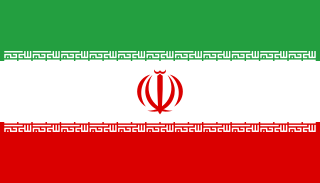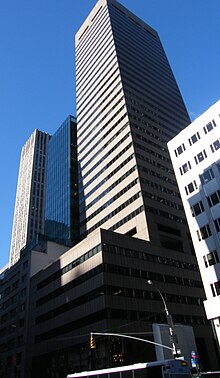
Reza Shah Pahlavi was an Iranian military officer and the founder of the Pahlavi dynasty. As a politician, he previously served as minister of war and prime minister of Qajar Iran and subsequently reigned as Shah of Pahlavi Iran from 1925 until he was forced to abdicate after the Anglo-Soviet invasion of Iran in 1941. He was succeeded by his eldest son, Mohammad Reza Shah. A modernizer, Reza Shah clashed with the Shia clergy and introduced many social, economic, and political reforms during his reign, ultimately laying the foundation of the modern Iranian state.

The Iranian revolution, also known as the 1979 revolution, or the Islamic revolution of 1979 was a series of events that culminated in the overthrow of the Pahlavi dynasty in 1979. The revolution led to the replacement of the Imperial State of Iran by the present-day Islamic Republic of Iran, as the monarchical government of Mohammad Reza Pahlavi was superseded by the theocratic Ayatollah Ruhollah Khomeini, a religious cleric who had headed one of the rebel factions. The ousting of Pahlavi, the last Shah of Iran, formally marked the end of Iran's historical monarchy.

The Milad Tower, also known as the Tehran Tower, is a multi-purpose tower in Tehran, Iran. It is the sixth-tallest tower and the world's first telecommunication tower in terms of the usage area of the top structure and the tallest tower in Iran and the 24th-tallest freestanding structure in the world. The construction of this tower took about 11 years and 7 months.

Reza Pahlavi is the eldest son of Mohammad Reza Pahlavi, the former Shah of Iran, and his wife Farah Diba. He was officially named Crown Prince of Iran in 1967 at the time of his father's coronation.

Bank Melli Iran is the first national and commercial retail bank of Iran. It was considered as the largest Iranian company in terms of annual income with a revenue of 364 657 billion Rials in 2016. It is the largest bank in the Islamic world and in the Middle East. By the end of 2016, BMI had a net asset of $76.6 billion and a network of 3.328 banking branches; so it was known as the largest Iranian bank based on the amount of assets. The brand of BMI was recognized as one of the 100 top Iranian brands in 10th National Iranian Heroes Championship in 2013. The National Bank has 3328 active branches inside, 14 active branches and 4 sub-stations abroad, and it has 180 booths. The first managing director of BMI was Kurt Lindenblatt from Germany, the first foreign branch of BMI was opened in Hamburg, Germany in 1948.

Qazvin is a city in the Central District of Qazvin County, Qazvin province, Iran, serving as capital of the province, the county, and the district. It is the largest city in the province.
The Arab conquest of Iran, which culminated in the fall of the Sasanian Empire to the nascent Rashidun Caliphate, brought about a monumental change in Iranian society by purging Zoroastrianism, which had been the Iranian nation's official and majority religion since the time of the Achaemenid Empire. Since the Rashidun invasion, Islam has consistently held the status of Iran's official religion except for during a short period in the 13th century, when the Mongol invasions and conquests destroyed the Abbasid Caliphate and smaller Islamic realms before resulting in the establishment of the Ilkhanate. The process by which Iranian society became integrated into the Muslim world took place over many centuries, with nobility and city-dwellers being among the first to convert, in spite of notable periods of resistance, while the peasantry and the dehqans took longer to do so. Around the 10th century, most Persians had become Muslims.

Iranian architecture or Persian architecture is the architecture of Iran and parts of the rest of West Asia, the Caucasus and Central Asia. Its history dates back to at least 5,000 BC with characteristic examples distributed over a vast area from Turkey and Iraq to Uzbekistan and Tajikistan, and from the Caucasus to Zanzibar. Persian buildings vary greatly in scale and function, from vernacular architecture to monumental complexes. In addition to historic gates, palaces, and mosques, the rapid growth of cities such as the capital Tehran has brought about a wave of demolition and new construction.

Ali Qapu is an imperial palace in Isfahan, Iran. It is located on the western side of the Naqsh-e Jahan Square, opposite to the Sheikh Lotfollah Mosque, and had been originally designed as a vast portal entrance to the grand palace which stretched from the Naqsh-e Jahan Square to the Chahar Baq Boulevard. UNESCO inscribed the Palace and the Square as a World Heritage Site due to its cultural and historical importance. The palace is forty-eight meters high and there are six floors, each accessible by a difficult spiral staircase. In the sixth floor, Music Hall, deep circular niches are found in the walls, having not only aesthetic value, but also acoustic. Ali Qapu is regarded as the best example of Safavid architecture and a symbol of Iran's Islamic heritage.

The Blue Mosque is a historic mosque in Tabriz, Iran. The construction for Blue Mosque, also known as Masjed-e Moẓaffariya, started during the rule of the Qarā Qoyunlu dynasty (1351–1469) and was completed in 1465 during the reign of the Āq Qoyunlu The famous Blue Mosque is widely recognized as the last remaining example of Turkmen architectural and decorative styles in the city. The features of Blue Mosque prompted the scholars to explore the innovative features of Tabriz's ceramic tile craftsmanship—highlighting its distinctive "blue-and-white" patterns, lusterware, and gilded cobalt tiles, which for a considerable time were recognized as the sole known example of their kind.

Cultural Foundation of Refah was an elementary school for girls in Tehran, Iran. It gained historical significance in the 1979 Iranian Revolution when it was the temporary headquarters of the revolutionists led by Ruhollah Khomeini. It was also used for the Islamic Revolutionary Court and the execution of officials of the second Pahlavi Regime on its rooftop before being transformed into what is being currently used as, a cultural and educational institution.

The Imam Reza shrine, located in Mashhad, Iran, is an Islamic shrine containing the remains of Ali al-Rida, the eighth Imam of Shia Islam. It is the largest mosque in the world by area. Also contained within the complex are the Goharshad Mosque, a museum, a library, four seminaries, a cemetery, the Razavi University of Islamic Sciences, and other buildings.

650 Fifth Avenue is a 36-story 150 m (490 ft) building at Fifth Avenue and 52nd Street in Midtown Manhattan, New York City.

The Mostazafan Foundation of Islamic Revolution formerly Bonyad-e Mostazafan va Janbazan is a charitable bonyad, or foundation, in the Islamic Republic of Iran, the second-largest commercial enterprise in Iran behind the state-owned National Iranian Oil Company and biggest holding company in the Middle East. The foundation used to be directly run by Khomeini.

Corruption in Iran is widespread, especially in the government. According to a report in 2024, Iran ranks close to the bottom on the Corruption Perception Index of Transparency International. While Ali Khamenei claims corruption in the country is "occasional rather than systemic," corruption in Iran is an instrument of national strategy and a core feature of the political order.

The Al-Hadi School of Accelerative Learning (AHS) is an Islamic primary and secondary school in Southwest Houston, Texas. The school is founded by Nasser Biria and is located on the premises of the Islamic Education Center of Greater Houston (IEC) of Houston, which also houses one of the largest mosques in Houston. According to Faheem Kazimi, the chairperson of the IEC, it is a Houston-area school that runs on tuition fees that comes from the students ranging to $5000. The school is near Westheimer Road.

Propaganda in Iran originates from the Iranian government and "private" entities, which are usually state controlled.

Hassan Alavikia was an Iranian general and businessman in the Pahlavi-era. Along with Teymur Bakhtiar and Hassan Pakravan, he was a co-founder of the SAVAK.

As of 2012, the city of Houston has the largest Muslim population in Texas and the largest Muslim population in the Southern United States. That year, Kate Shellnut of the Houston Chronicle wrote that "Some estimate that Muslims make up 1.2 percent of the city's population." As of 2012 the estimated population of Muslims in Houston was around 63,000. As of today, there are over 209 mosques and storefront religious centers, with the largest being the Al-Noor Mosque of the Al Noor Society of Greater Houston.
Iranian frozen assets in international accounts are calculated to be worth between $100 billion and $120 billion. Almost $2 billion of Iran's assets are frozen in the United States. According to the Congressional Research Service, in addition to the money locked up in foreign bank accounts, Iran's frozen assets include real estate and other property. The estimated value of Iran's real estate in the U.S. and their accumulated rent is $50 million. Besides the assets frozen in the U.S., some parts of Iran's assets are frozen around the world by the United Nations.


















